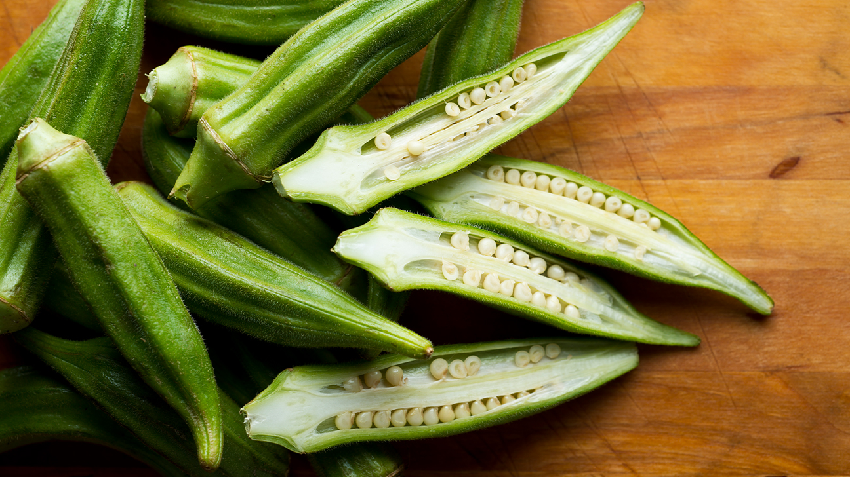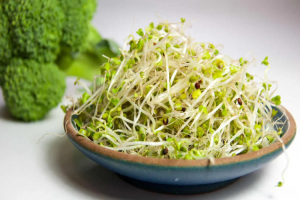
24 Jun Eleven foods to regulate blood sugar
For people with prediabetes, diabetes, or another condition that can affect blood sugar. Diet is an important factor to regulate blood sugar levels.
While factors like body weight, activity, stress, and genetics also play a role in maintaining blood sugar levels. Following a healthy diet is critical to blood sugar control.
While some foods, including products high in added sugar and refined carbohydrates, can contribute to blood sugar fluctuations, others can optimize blood sugar control while promoting overall health.
The following are 11 foods that can help you regulate your blood sugar
Broccoli and Broccoli Sprouts

Sulforaphane is a type of isothiocyanate that has blood sugar-lowering properties.
This plant chemical is produced when broccoli is chopped or chewed. Due to the reaction that occurs between a glucosinolate compound called glucoraphanin. The enzyme myrosinase, both of which are concentrated in broccoli.
Test-tube, animal and human studies have shown that sulforaphane-rich broccoli extract has antidiabetic effects. Helping to improve insulin sensitivity and reduce blood sugar and markers of oxidative stress.
Broccoli sprouts are concentrated sources of glucosinolates such as glucoraphanin and have been shown to help promote insulin sensitivity and lower blood sugar levels in people with type 2 diabetes when used as a powdered supplement or extract.
Likewise, the consumption of cruciferous vegetables has been linked to a lower risk of type 2 diabetes.
Note that the best way to improve sulforaphane availability is to enjoy raw or lightly steamed broccoli and broccoli sprouts. Or add active sources of myrosinase such as mustard seed powder to cooked broccoli.
Seafood
Shellfish, including fish and shellfish, offer a valuable source of protein, healthy fats, vitamins, minerals, and antioxidants that can help regulate blood sugar levels.
Proteins are essential for blood sugar control. These help slow down digestion and prevent spikes in blood sugar levels after eating. As well as increase the feeling of fullness. In addition, they can help prevent overeating and help lose excess body fat, two effects that are essential for healthy blood sugar levels.
For example, a study of 68 overweight or obese adults who ate 26 ounces (750 grams) of fatty fish per week found significant improvements in blood sugar levels after meals, compared to those who ate lean fish.
Pumpkin and Pumpkin Seeds
Brightly colored and packed with fiber and antioxidants, pumpkin is a great choice for blood sugar regulation. In fact, pumpkin is used as a traditional remedy for diabetes in many countries such as Mexico and Iran.
Pumpkin is high in carbohydrates called polysaccharides, which have been studied for their blood sugar-regulating potential. Treatments with pumpkin extracts and powders have been shown to significantly lower blood sugar levels in both human and animal studies.
However, more studies are needed to determine how the whole pumpkin, when eaten roasted or steamed, may benefit blood sugar.
Pumpkin seeds are packed with healthy fats and protein, making them a great choice for blood sugar control.
A 2018 study of 40 people found that consuming 2 ounces (65 grams) of pumpkin seeds lowered post-meal blood sugar by up to 35 percent, compared to a control group.
Nuts and Nut Butter
Research has shown that eating nuts can be an effective way to help regulate blood sugar levels.
A study of 25 people with type 2 diabetes showed that eating peanuts and almonds throughout the day as part of a low-carb diet lowered both fasting and post-meal blood sugar levels.
Additionally, one review found that diets emphasizing nuts with an average daily intake of 2 ounces (56 grams) significantly reduced fasting blood sugar and hemoglobin A1c (HbA1c), a marker of blood sugar control. long-term blood pressure, compared with a control diet, in people with type 2 diabetes.
Okra
Okra is a fruit that is often used as a vegetable. It is a rich source of blood sugar-lowering compounds like polysaccharides and flavonoid antioxidants.
In Turkey, okra seeds have long been used as a natural remedy to treat diabetes due to their powerful blood sugar-lowering properties.
Rhamnogalacturonan, the main polysaccharide in okra, has been identified as a powerful anti-diabetic compound. Additionally, okra contains the flavonoids isoquercitrin and quercetin 3-O-gentiobioside, which help lower blood sugar by inhibiting certain enzymes.
Although animal studies suggest that okra has powerful anti-diabetic properties, research studies on humans are needed.
Flax Seeds
In an 8-week study of 57 people with type 2 diabetes, those who consumed 7 ounces (200 grams) of 2.5% fat yogurt containing 1 ounce (30 grams) of flaxseed per day experienced significant reductions in HbA1c, compared to those who ate plain yogurt.
What’s more, a review of 25 controlled studies found that eating whole flaxseeds produced significant improvements in blood sugar control.
Beans And Lentils
Beans and lentils are rich in nutrients, such as magnesium, fiber, and protein, that can help lower blood sugar. They are particularly high in soluble fiber and resistant starch. Which help slow digestion, and may improve blood sugar response after eating.
For example, a study of 12 women showed that adding black beans or chickpeas to a meal with rice significantly lowered blood sugar levels after the meal, compared to eating rice alone.
Other studies have shown that eating beans and lentils may not only benefit blood sugar regulation but also possibly help protect against the development of diabetes.
Kimchi And Sauerkraut
Fermented foods like kimchi and sauerkraut are packed with health-promoting compounds. Including probiotics, minerals, and antioxidants, and their consumption has been associated with improved blood sugar and insulin sensitivity.
A study of 21 people with prediabetes found that eating fermented kimchi for 8 weeks improved glucose tolerance in 33 percent of participants. While only 9.5 percent of participants who ate fresh kimchi showed increased glucose tolerance. glucose.
Another study of 41 people with diabetes showed that following a traditional Korean diet rich in fermented foods such as kimchi for 12 weeks produced greater reductions in HbA1c than a control diet.
Chia Seeds
Eating chia seeds can help control blood sugar. Studies have linked chia seed consumption to regulate blood sugar levels and improvements in insulin sensitivity.
A 2020 review of 17 animal studies concluded that chia seeds may help improve insulin sensitivity and blood sugar control. As well as potentially reduce disease risk, including diabetes risk.
Additionally, a study of 15 healthy adults showed that participants given 1 ounce (25 grams) of ground chia seeds along with 2 ounces (50 grams) of a sugar solution experienced a 39 percent reduction in blood sugar levels in the blood, compared to those who only consumed the sugar solution.
Kale
Kale is often described as a “superfood,” and for good reason. It’s packed with compounds that can help lower blood sugar levels, including fiber and flavonoid antioxidants.
A study involving 42 Japanese adults showed that consuming 7 or 14 grams of cabbage-containing foods with a high-carbohydrate meal significantly regulates blood sugar levels after the meal, compared with a placebo.
Quercetin and kaempferol, have potent blood sugar-lowering and insulin-sensitizing effects.
Berries
Numerous studies have linked the consumption of berries with better blood sugar control. Berries are loaded with fiber, vitamins, minerals, and antioxidants. And are a great choice for people with blood sugar management issues.
A 2019 study found that eating 2 cups (250 grams) of red raspberries with a high-carb meal significantly lowered post-meal insulin and blood sugar in adults with prediabetes, compared to a control group.
In addition to raspberries, studies have shown that strawberries, blueberries, and blackberries can benefit blood sugar control by improving insulin sensitivity and removing glucose from the blood.
You may like to read ADVANTAGES AND DISADVANTAGES OF FAST FOOD


No Comments